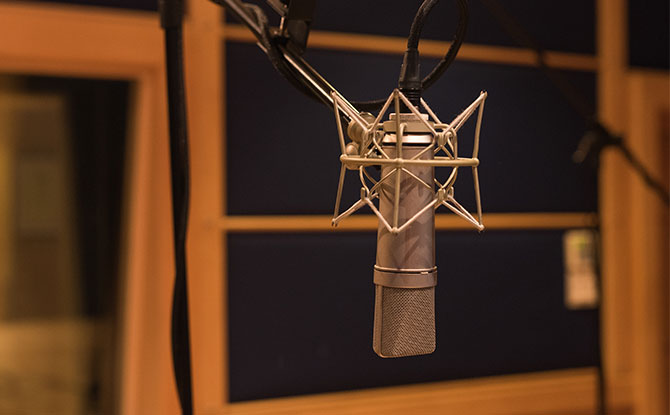The most common types of microphones that you will come across when working in live sound are dynamic and condenser microphones. Understanding the difference will allow you to better decide which to use in what type of situation.
Dynamic Microphones
How Do Dynamic Microphones Work?

The most common type of microphones are dynamic ones. They are favoured because they are durable, affordable, and all-purpose in design.
Dynamic microphones convert sound into an electrical signal by using a moving coil and magnet. At the front of the microphone, a diaphragm, which is designed to move back and forth with incoming sound waves, is connected to the coil of wire that sits in a magnetic field created by magnets.
When the diaphragm is struck by sound waves, the coil moves back and forth in the magnet’s magnetic field. This produces a very small electrical current, which is then transmitted out of the microphone, down the cable to the mixer.
Characteristics of Dynamic Microphones
Dynamic microphones are strong and made to withstand loud noises, making them ideal for live performances where they may be exposed to such noises.
They are also made to withstand the abuse and wear and tear that comes about with frequent use.
Dynamic microphones do not need an external power source to work. Instead, they rely only on the mechanical energy of the sound waves striking the diaphragm to function.
As a result, dynamic microphones are less sensitive than condenser microphones. This means that they might not be able to capture every fine detail of a performance.
They are considered to be a dependable and durable type of microphone and are frequently used in live performance settings, particularly for vocals and drums. Their durability means that they can usually continue to work even if a vocalist drops them, and their ruggedness allows them to handle high Sound Pressure Level situations such as the sound of drums being hit.
Condenser Microphones
How Do Condenser Microphones Work?

Condenser microphones capture sound by generating variations in electrical voltage. This is as opposed to dynamic microphones by using a magnetic field.
Just like a dynamic microphone, a condenser microphone also has a diaphragm that moves in response to the incoming sound waves. A metal plate is attached to the diaphragm.
There is an electrical charge between the metal plate and a separate back plate. This can be thought of as an electrical reservoir, also known as a capacitor. Condenser is an old term for a capacity.
The “reservoir” is disturbed when the diaphragm moves. This causes “ripples” that are then sent out of the microphone as the audio signal.
Condenser microphones need an electrical power source to work. This is used to create an electrical charge to build the “reservoir”.
This electric charge can either come from a battery in the microphone or from the mixer. Phantom Power is a small voltage sent by the mixer through the microphone cable to power up condenser microphones.
Characteristics of Condenser Microphones
Condenser microphones are more responsive and audibly sensitive. They are suited for capturing the finer details of cymbals, violins, and other high-frequency instruments because they frequently react favorably to high-frequency sounds.
However, you can also find condenser microphones being used for vocals and acoustic instruments like pianos and guitars as well.
Read more about different types of microphones.

